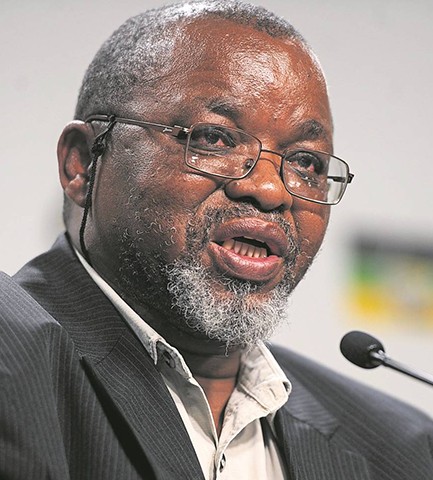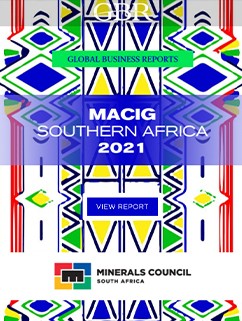
"We are working in earnest to ensure the finalization of the country’s exploration strategy to increase our share of the global expenditure in the next 3 to 5 years."
RELATED PUBLICATION
Gwede Mantashe
MINISTER OF MINERAL RESOURCES, DEPARTMENT OF MINERAL RESOURCES AND ENERGY, SOUTH AFRICA
What have been the Ministry’s achievements over the past year and what is on its agenda for 2021 – 2022?
Following the outbreak of the Coronavirus in 2019, and the subsequent nationwide lockdown in March 2020, South Africa has sought to save lives and protect livelihoods. Several interventions to revive the economy were developed through the economic reconstruction and recovery plan. In the mining and energy portfolio, our interventions allowed collieries and refineries to remain operational throughout the nationwide lockdown to ensure a continued and uninterrupted supply of energy to society.
Accordingly, outcomes of these interventions manifested in the Q3 GDP readings when our economy registered a recovery of 66.1%. Mining and quarrying registered a growth rate of 288% contributing 11.8% point to the overall GDP. In March 2021, mining registered a 21.3% year on year growth, following a 0.8% year on year growth in February 2021 performance. This served as a confirmation that our interventions are yielding positive results in the economic reconstruction and recovery journey.
South Africa has suffered due to the lack of exploration. What is the current state of exploration in the country and how is it being promoted?
The Department has commenced with the procurement process of a new modern system that seeks to simplify and improve efficiency in rendering services to investors in the mining industry and the public. With this system, the Department seeks to ensure the provision of reliable and precise information on the location of exploration and mining rights. We believe this will reduce the turnaround time in the process of granting exploration and mining rights. The fundamental objective of this system is to attract investment in the mining sector and to grow the economy.
To us, exploration is the lifeblood of mining. We believe mining without exploration is unsustainable. Hence, we are working in earnest to ensure the finalization of the country’s exploration strategy to increase our share of the global expenditure in the next 3 to 5 years. We have increased mapping coverage from below 5% to almost 9% to date, with a particular focus on areas with the greatest potential for recovery of world class minerals.
To what extent is the move to renewables risking the future of coal mining in South Africa?
We believe that the revival of and growth of the mining sector cannot be possible without a stable and secure energy supply. It is for these reasons that we have made it our preoccupation to drive a robust energy security program. Our interventions in this regard are informed by the country’s Integrated Resource Plan (IRP) 2019 which incorporates all sources of energy as part of the national energy mix. This includes technologies such a solar, photovoltaic, coal, gas, and battery storage.
We remain committed to rapidly expanding our energy generation capacity in line with the Economic Reconstruction and Recovery Plan. To achieve this, we are implementing multiple measures that will fundamentally change the trajectory of energy generation in our country. For example, we initiated the procurement of the Risk Mitigation Independent Power Producer projects that can deliver a total of 1,995 megawatts of power into our electricity grid within 12 to 18 months approval. 11 preferred bidders have been announced and are expected to reach financial closure by the end of September 2021. Another initiative is the amendment of Schedule 2 of the Electricity Regulation Act to increase the regulation licensing threshold for embedded generation from 1 MW to 100 MW. We believe this will go a long way in resolving the energy supply and will unlock significant investment in embedded energy generation whilst enabling mining companies to build their own generation facilities to supply their energy needs.
We also successfully opened Bid Window 5 of the Renewable Energy Independent Power Producer Procurement Programme to procure 2,600 megawatts of new energy generation capacity from wind and solar energy technologies.
In addition to amending the Electricity Regulations on new generation capacity to enable municipalities in good financial standing to develop their own power generation projects or buy power from Independent Power Producers. The necessary requirements have been clarified in this regard.
We endeavour to create an enabling environment through investor friendly legislation. In this regard, we finalized the amendment of the Gas Amendment Bill to unlock investment into the gas sector and facilitate the development of gas infrastructure.











